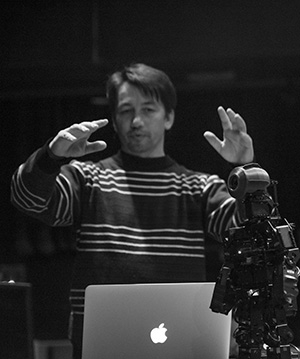Deakin Motion.Lab robots to get the groove
Research news
Robots dancing in response to their human partners is one of the newest frontiers in the rapid evolution of our artificial friends.
A team of researchers at the Deakin Motion.Lab has received a 2015 Creative Victoria Grant to develop a robot dance performance, inspired by the story of “Pinocchio.”
The $20,000 grant will fund the creative development of “The Pinoke Project,” an interdisciplinary collaboration that will incorporate cutting edge technology, contemporary dance practice and publication.
Dr Jordan Beth Vincent, Dr John McCormick, Professor Kim Vincs, Jordy Kaye, Peter Divers, Kieren Wallace and Steph Hutchison will work on the project over the next six months to develop a performance, an interactive app publication and a documentary that records the process.
The grant will allow the researchers to work with humanoid robots, which will be customised through the addition of 3D printed skin, or exoskeleton, as well as printed body parts.
Using artificially intelligent neural networks and motion capture, the team will teach the robots to dance and respond to dancer Steph Hutchison – with one important goal being robot autonomy. Until now, most dancing robots have produced highly mechanical, pre-programmed dance routines.
“This project is about creative arts practice. It will combine practice-based and traditional research to achieve an interactive performance between robots and a human dancer,” explained Dr Vincent, an Associate Research Fellow at Motion.Lab.
“The themes of Pinocchio meld well with the characteristics of this kind of creative work, raising questions about ‘humanness,’ magic, lies and truth. I wonder if we can gain a sense of truth in movement from robots.”
Working with colleagues from the Centre for Intelligent Systems Research (CISR), the Deakin Motion.Lab team will use their knowledge of human bodies and movement to create a new type of art.
Director, Professor Vincs, noted that Deakin Motion.Lab’s cutting edge research is pushing the boundaries of robotics and artificial intelligence.
“It is a huge challenge to teach robots to respond to music and human movement. Creative expression is one of the fundamental characteristics for defining humans,” she said. “If we can help to narrow that gap, we will be opening the way for a whole range of new robotics applications.”
Share this story
 John McCormick and Pinoke in rehearsal. (Photo: Deakin Motion.Lab).
John McCormick and Pinoke in rehearsal. (Photo: Deakin Motion.Lab).
